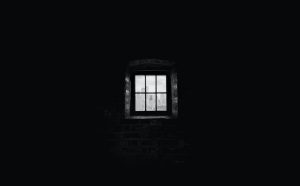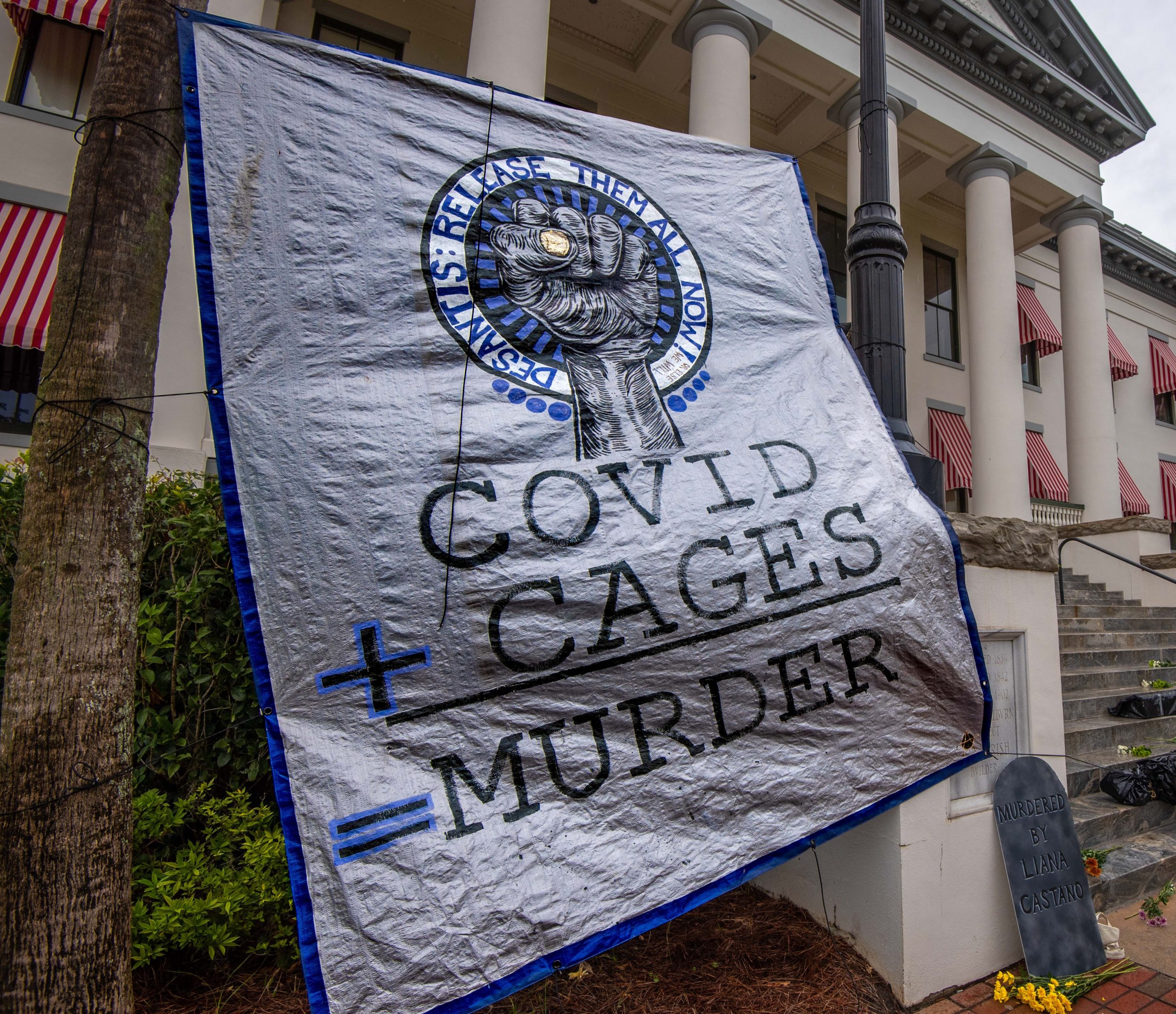When I was beginning to have real difficulty breathing, I put a note out the door. It works like this when you are in the hole. You write a note on a piece of paper or whatever and slide it out the crack of the door about head-high. It sticks out like a flag and the next officer that comes by gets it. I wrote on a manilla legal envelope: “My name is [REDACTED]. I have COVID-19. I am dying. Is there anyone out there who can help me get to a doctor or to a hospital?”

On July 3, 2020, I knew I was in trouble. I had been sick for a couple days and had most of the known COVID-19 symptoms. My roommate had the same symptoms.
I tried to fight it off, because most people who got symptoms were beating them in three or four days. But I started spiralling out of control and by Sunday the 12th, I couldn’t take the pain anymore. I told my roommate that I was going to go to Medical to get help. When they called Pill Call (when the med cart comes out) on Monday morning, I went out with them to see Medical.
The Lieutenant made me wait outside for about an hour before telling me I had to go back to the building, saying they would call me back at 1:30 pm. I told her I didn’t think this was a really good idea if I did, in fact, have COVID-19. They responded by telling me firmly to, “go back to your building now.”
So, I went back to Medical at 1:30 p.m. and sat out front for about half an hour before being called to the back. Two doctors came into the room and talked to me. I told them what symptoms I had. Then, they got up and left the room. I remember thinking, Man, they must be going to call an ambulance.
When they came back, they’d brought a surgical respirator, told me to put it on and not to take it off unless I was in my cell by myself. One of them wrote me a prescription for four different drugs, then I was taken to The Hole and put in a cell by myself.
I never received the medication that the doctors prescribed, and I never found out why.
The next 10 days were hell.
It was unbearably hot in the cell. The window had a shroud over the outside, and the only thing visible was a little patch of sky right at the top of the window. When an officer leaves the front door to the cell house open, the little air flow that the exhaust fan draws through the room stops entirely; the rooms here only have a one inch gap under the door for air to flow anyway.
I made a chute to put on the inside of the window to direct what little air flow there was down to the floor, because that’s where I was most of the time.
I couldn’t and didn’t eat for twelve days altogether. I was only able to drink water – ice cold water, when I could get it.
One day, the door flap was open and I could look out into the day room area. They started passing out ice. What they do is bring a cooler of ice around and fill up your cup, bowl, or both if you are lucky. The inmate that was filling the cups with ice used his hands to grab cups and bowls and scoop the ice. He did not sanitize his hands.
Swallowing even a little bit of food brought on vomiting episodes that would last for hours at a time. So I stayed constantly dehydrated. Then, I began coughing up blood, and it continued for ten days. I coughed and coughed and coughed around the clock, usually until I passed out from exhaustion. I woke up four to five times a day lying in various places around the cell, usually face down, in a puddle of regurgitated water filled with spots of blood.
Since I didn’t have anything to clean the room, I just pushed whatever I’d vomited out under the door.
The outside of that door was now what appeared to be a hotbed of COVID-19, and the orderly that worked the hold eventually caught COVID, too.
I beat on the door for hours at a time – screamed, when I could. I was so weak for a few of the worst days that I could not even stand; I had to crawl around on the floor on all fours.
When I was beginning to have real difficulty breathing, I put a note out the door. It works like this when you are in the hole. You write a note on a piece of paper or whatever and slide it out the crack of the door about head-high. It sticks out like a flag and the next officer that comes by gets it. I wrote on a manilla legal envelope: “My name is [REDACTED]. I have COVID-19. I am dying. Is there anyone out there who can help me get to a doctor or to a hospital?”
Two days went by, and the note was still sticking out the door. An officer finally got it and called the evening duty officer to come down. It was a lieutenant. He opened the metal flap over the door window. He told me I was not sick enough to go to the hospital.
If I could have made it to the top bunk, I would have hung myself.
I knew I was dying. And I knew no one cared.
I lost twenty-two pounds during those ten days. July 24th came, and I felt better. I was able to get up and walk for about ten minutes at a time. Stayed in the hole until August 12th before being let out.
The pain is the hardest thing to explain.
I was tested for COVID-19 on the 13th of July and was not told the results until the 30th of August.


